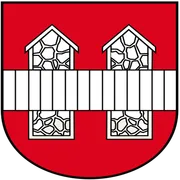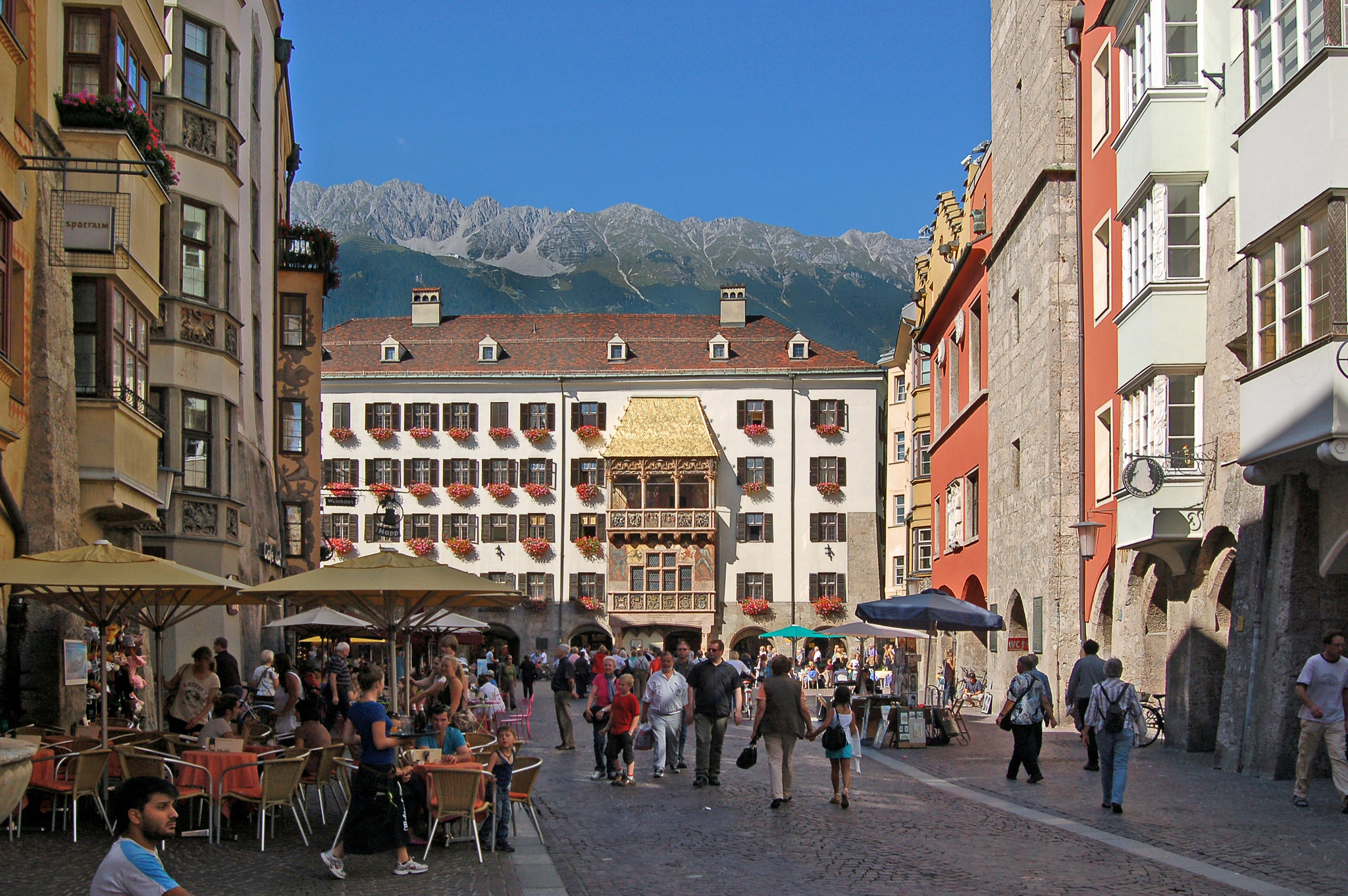The Goldenes Dachl, or Golden Roof, is a landmark structure located in the heart of Innsbruck, Austria. Built in the early 16th century, it features a striking late Gothic oriel window adorned with 2,657 fire-gilded copper tiles, giving it its distinctive golden appearance. Emperor Maximilian I commissioned the building to commemorate his marriage to Bianca Maria Sforza and to serve as a royal box where he could observe festivals and tournaments in the square below. The facade is decorated with murals and reliefs depicting various scenes from Maximilian’s life, as well as coats of arms. Today, the Goldenes Dachl is one of Innsbruck’s most famous tourist attractions and houses a museum dedicated to Emperor Maximilian I and the history of the building.
Innsbruck’s Golden Roof is a shining symbol of the city’s rich history and cultural significance. This iconic landmark, nestled in the heart of Innsbruck’s Old Town, has been captivating visitors for centuries with its gleaming golden tiles and intricate decorations. But there’s more to this architectural gem than meets the eye.
The story of the Golden Roof dates back to the early 16th century when Emperor Maximilian I commissioned its construction. Completed in 1500, the structure was built as a royal box where the emperor and his wife could sit and enjoy festivals, tournaments, and other events held in the square below. It’s said that Maximilian wanted to create a grand statement piece to silence critics who accused him of wasting money and to prove that he and his empire were not, in fact, strapped for cash.
The roof itself is adorned with 2,657 fire-gilded copper tiles, creating a dazzling display that has become the city’s most recognizable feature. But it’s not just the golden tiles that make this structure special. The façade of the building is decorated with intricate reliefs and sculptures, including two carved stone coats of arms bearing the imperial eagle and depictions of Maximilian himself.
Interestingly, despite its name, the Golden Roof isn’t actually made of solid gold. The copper tiles are merely gilded with a thin layer of gold, but the effect is no less impressive. This clever use of materials showcases the craftsmanship and ingenuity of the time, creating a lasting monument that has stood the test of time.
Over the centuries, the Golden Roof has witnessed countless historical events and changes in Innsbruck. It has survived wars, renovations, and the ever-evolving cityscape around it. Today, it stands as a testament to the city’s enduring spirit and rich cultural heritage.
The building beneath the Golden Roof has also played various roles throughout history. It has served as a residence for nobility, a government building, and even a school. In modern times, it houses a museum dedicated to Emperor Maximilian I and the history of Innsbruck, allowing visitors to delve deeper into the fascinating story behind this iconic landmark.
The Golden Roof’s significance extends beyond its historical value. It has become a symbol of Innsbruck’s identity, featuring prominently in the city’s marketing and tourism efforts. Visitors from around the world flock to see this golden wonder, making it one of Austria’s most photographed landmarks.
But the Golden Roof is more than just a pretty façade. It serves as a reminder of Innsbruck’s important role in European history and its connections to the powerful Habsburg dynasty. Emperor Maximilian I, known as the “Last Knight” for his romantic notions of chivalry, left an indelible mark on the city, and the Golden Roof stands as his most visible legacy.
As Innsbruck has grown and changed over the centuries, the Golden Roof has remained a constant, beloved presence in the city’s landscape. It continues to inspire awe in those who see it for the first time and nostalgia in those who have grown up in its golden glow.
Today, the Golden Roof is not just a historical monument but a living part of Innsbruck’s cultural life. The square beneath it often hosts markets, concerts, and other events, continuing its tradition as a gathering place for the city’s residents and visitors alike. As the sun sets and the golden tiles catch the last rays of light, it’s easy to imagine Emperor Maximilian looking down from his royal box, still presiding over his beloved city after all these years.
The Goldenes Dachl, or Golden Roof, is an iconic landmark in Innsbruck, Austria, that symbolizes the city’s rich history and cultural heritage. Built in the early 16th century by Emperor Maximilian I, this ornate structure features 2,657 fire-gilded copper tiles and intricate Gothic and Renaissance decorations. The Golden Roof served as a royal box for the emperor to observe events in the square below and remains a testament to the Habsburg dynasty’s power and wealth. Today, it stands as a popular tourist attraction and houses a museum, continuing to play a significant role in Innsbruck’s identity and attracting visitors from around the world who come to admire its architectural beauty and historical significance.

